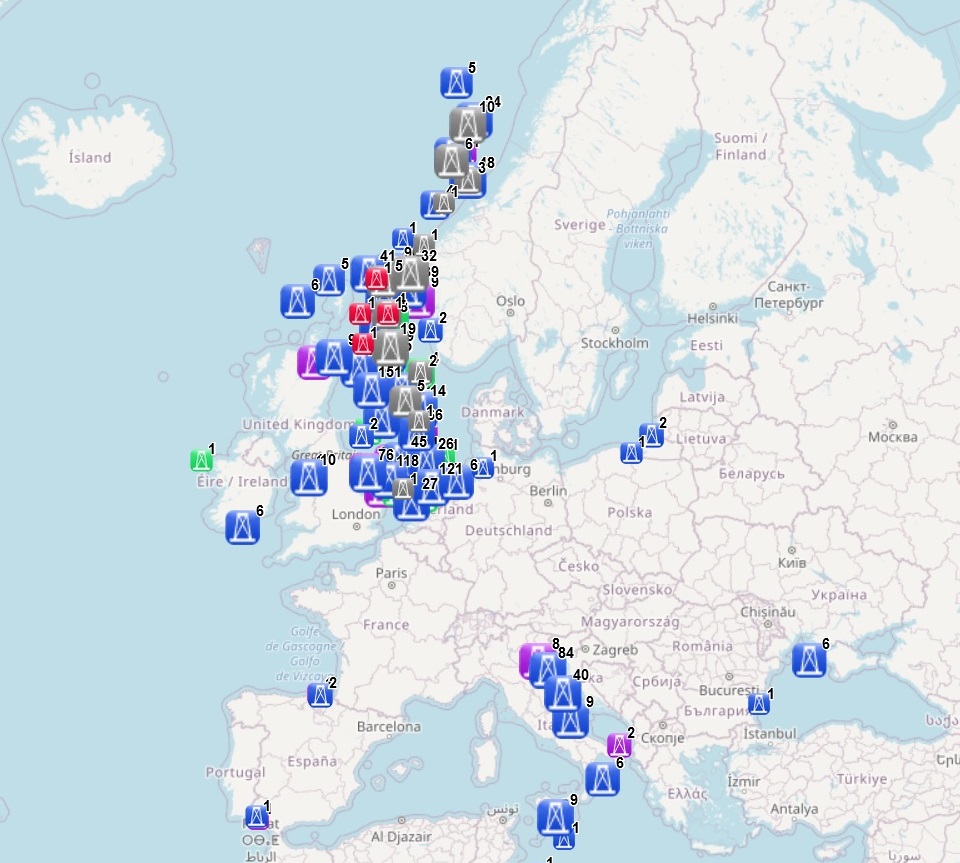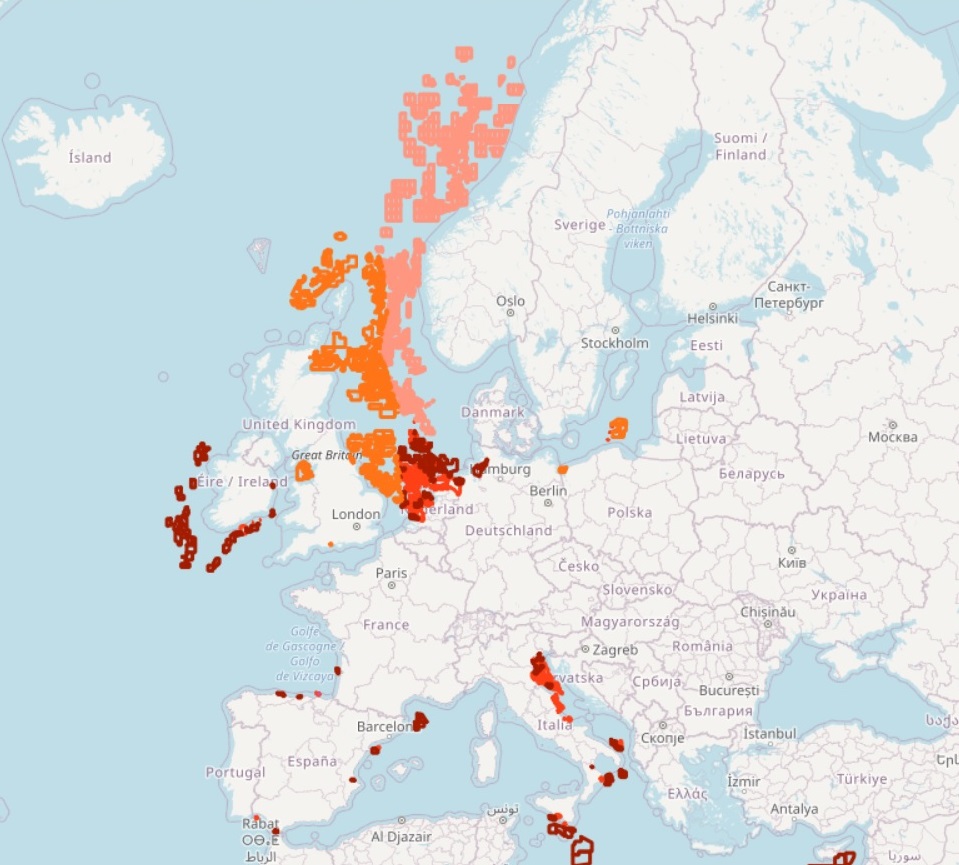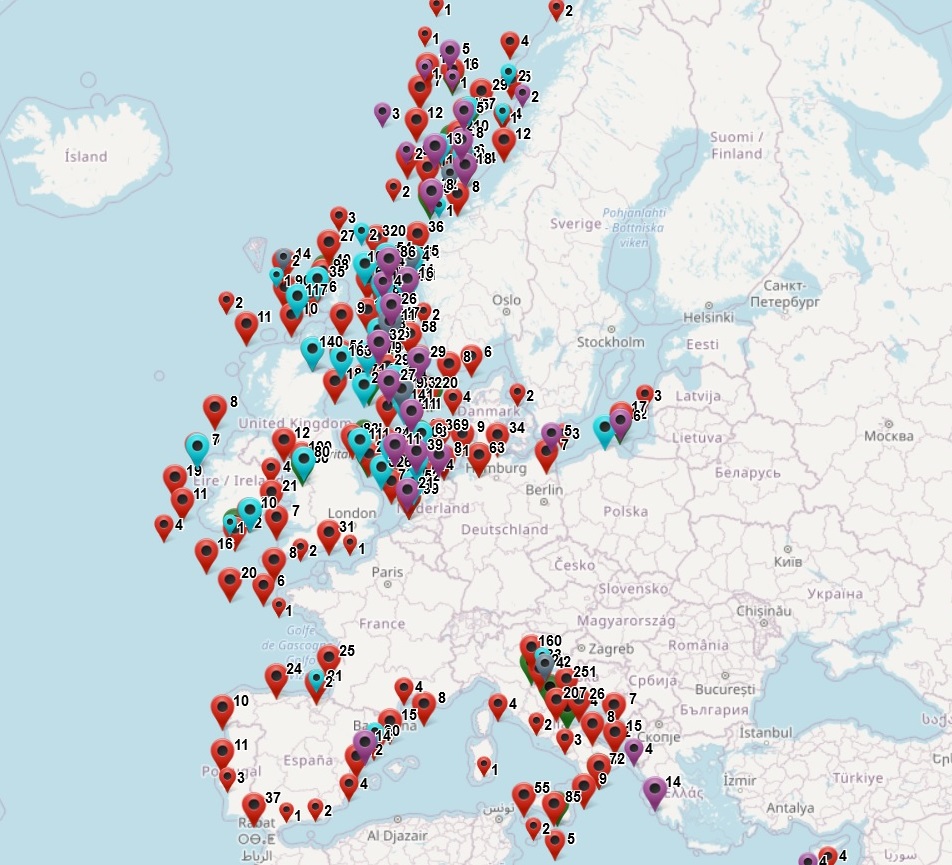Norway - Norwegian Petroleum Directorate
Type of resources
Available actions
Topics
Keywords
Contact for the resource
Provided by
Years
Formats
Representation types
Scale 1:
-

The dataset on offshore installations for Oil and Gas exploitation and exploration activities in the European seas was created in 2015 by Cogea for the European Marine Observation and Data Network (EMODnet). It is the result of the aggregation and harmonization of datasets provided by several EU and non-EU sources. It is updated every year and it is available for viewing and download on EMODnet web portal (Human Activities, https://emodnet.ec.europa.eu/en/human-activities). The dataset contains points representing offshore installations and where available each point has the following attributes: ID, name, country, location block, operator, production start year, primary production, current status, category and function of the installation, sub-structure and topside weights (tonnes), water depth (metres), distance to coast (metres) and notes. The OSPAR commission source covers data for Germany, Ireland, Spain (Atlantic Sea), while for Italy data have been collected and harmonized from the Italian Ministry of Economic Development, for Denmark from the Danish Energy Agency, for the Netherlands from the TNO - Geological Survey of the Netherlands, for Croatia from the Croatian Hydrocarbon Agency, for Norway from the Norwegian Petroleum Directorate, for the UK from the Oil and Gas Authority (surface infrastructures), for Polish and Russian installations in the Baltic Sea from Marine Traffic and Helcom, finally from Marine Traffic come the data for Bulgarian, Russian and Ukrainian installations in the Black Sea and for Spanish installations in the Mediterranean Sea.
-

The dataset on offshore active licences for Oil and Gas exploitation and exploration in the EU was created in 2014 by Cogea for the European Marine Observation and Data Network (EMODnet). It is the result of the aggregation and harmonization of datasets provided by several EU and non-EU sources. It is updated every year, and is available for viewing and download on EMODnet Human Activities web portal (https://emodnet.ec.europa.eu/en/human-activities). It contains polygons representing the currently active licences for the following countries: Croatia, Cyprus, Denmark, Germany, Ireland, Italy, Malta, Netherlands, Norway, Poland, Spain and United Kingdom. Where available each polygon has the following attributes: country, code, name, type (exploitation, exploration, exploitation and exploration, other), licensing round (it includes also pending applications in Spain), area (square km), area info (it indicates if the area value is original from the source or has been calculated), valid from, valid to, operator or administrator, notes. Compared with the previous release, Maltese open areas and blocks for hydrocarbon licensing have been updated. Currently there are no active licenced areas in the French and Portuguese waters and no data available in the Black Sea.
-

The dataset on offshore wells for Oil and Gas industry activities in the EU was created in 2014 by Cogea for the European Marine Observation and Data Network (EMODnet). It is the result of the aggregation and harmonization of datasets provided by several EU and non-EU sources. It is updated every year, and is available for viewing and download on the EMODnet web portal (Human Activities, https://emodnet.ec.europa.eu/en/human-activities). It contains points representing offshore wells drilled in the following countries: Croatia, Cyprus, Denmark, Faroe Islands, France, Germany, Greece (only for western coast), Ireland, Italy, Latvia, Malta, Montenegro, Netherlands, Norway, Poland, Portugal, Spain, and United Kingdom. Where available each point has the following attributes: status (active, abandoned, other, suspended, N/A), country, code, name, year (spud date), purpose (exploitation, exploration, other), content (crude oil, natural gas, crude oil and natural gas, natural gas and crude oil, dry, other), operator, drilling company/facility, distance to coast (metres) and water depth (metres). Compared with the previous version this new version has been updated for most of the countries that have published or sent their last release of data.
 EMODnet Product Catalogue
EMODnet Product Catalogue